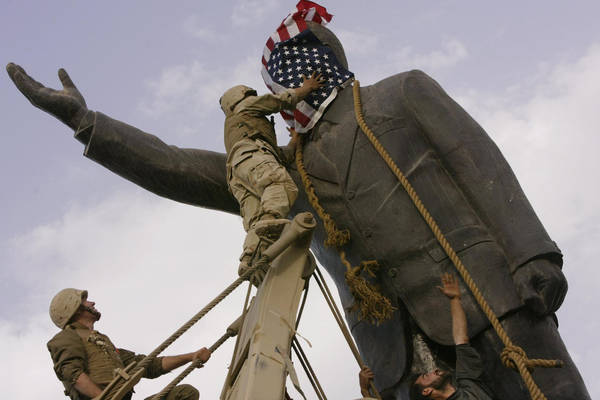
The Day Saddam Hussein’s Statue Came Down
On April 9, 2003, a US marine battalion rolled triumphantly into Firdos Square, in the center of Baghdad, two and a half weeks after the US invasion of Iraq began. Hours later, the marines toppled a statue of Saddam Hussein, amongst what seemed like a roaring, jubilant crowd of Iraqis. It became, perhaps, the most televised image of the Iraq War — and it seared itself into the minds of its viewers. Twenty years later, that image is still circulated, and sometimes celebrated.
Peter Maass, then a contributing writer for the New York Times Magazine, stood at the edge of Firdos Square that day. What he witnessed, was vastly different from what viewers were seeing on their television screens across the world. Years later, Maass reconstructed the chain of events that led to the toppling to see what went wrong. For this week's podcast extra, he speaks with Brooke about how the media subconsciously creates events for itself to cover — and how the rampant misconceptions that followed in the wake of the toppling led to a pernicious view of the Iraq War that we're still trying to divorce from today.
On the Media is supported by listeners like you. Support OTM by donating today (https://pledge.wnyc.org/support/otm). Follow our show on Instagram, Twitter and Facebook @onthemedia, and share your thoughts with us by emailing onthemedia@wnyc.org.
